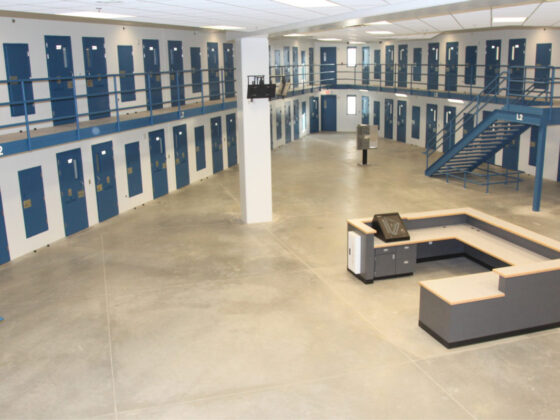In the realm of recovery and rehabilitation, the integration of massage therapy and physical therapy is emerging as a powerful alliance in promoting optimal healing. Imagine the soothing touch of skilled hands working in tandem with precise movements designed to restore mobility and strength.
This dynamic combination not only addresses the symptoms of pain and injury but also delves deeper into the underlying issues that may hinder progress. While physical therapy focuses on improving function and resilience through targeted exercises and modalities, massage therapy complements this approach by enhancing blood circulation, reducing muscle tension, and fostering a state of relaxation that is essential for healing.
As more individuals seek holistic treatment options, understanding how these two modalities can work together reveals a pathway to recovery that is both comprehensive and effective, inviting patients to embrace a journey toward wellness that is tailored to their unique needs.
Benefits of Integrating Massage with Physical Therapy
 Integrating massage with physical therapy offers a multitude of benefits that enhance the overall recovery process. Massage techniques, such as deep tissue and Myofascial release, can significantly reduce muscle tension and improve blood circulation, facilitating a more effective healing environment. This combination not only alleviates pain but also promotes relaxation, which can lower stress levels and enhance the patient’s overall sense of well-being.
Integrating massage with physical therapy offers a multitude of benefits that enhance the overall recovery process. Massage techniques, such as deep tissue and Myofascial release, can significantly reduce muscle tension and improve blood circulation, facilitating a more effective healing environment. This combination not only alleviates pain but also promotes relaxation, which can lower stress levels and enhance the patient’s overall sense of well-being.
Furthermore, the tactile feedback from massage helps therapists gauge progress and adjust treatment plans more effectively. By addressing both the physical and emotional aspects of recovery, patients often find themselves more engaged and motivated in their rehabilitation journey, leading to faster and more sustainable outcomes.
The fusion of these therapies, therefore, creates a holistic approach that is much greater than the sum of its parts.
Types of Massage Techniques Used in Therapy
 In the realm of therapeutic recovery, a variety of massage techniques play pivotal roles in enhancing overall outcomes. One widely recognized method is Swedish massage, characterized by its long, sweeping strokes that promote relaxation and blood circulation—perfect for easing tension in stressed clients. Deep tissue massage, in contrast, dives into the muscle’s deeper layers, targeting knots and chronic pain, making it invaluable for athletes or individuals recovering from injuries.
In the realm of therapeutic recovery, a variety of massage techniques play pivotal roles in enhancing overall outcomes. One widely recognized method is Swedish massage, characterized by its long, sweeping strokes that promote relaxation and blood circulation—perfect for easing tension in stressed clients. Deep tissue massage, in contrast, dives into the muscle’s deeper layers, targeting knots and chronic pain, making it invaluable for athletes or individuals recovering from injuries.
Then theres myofascial release, a technique involving gentle sustained pressure to eliminate restrictions in the fascia, facilitating greater mobility. Each approach serves specific needs, whether alleviating pain, enhancing flexibility, or promoting relaxation.
The beauty of combining these modalities in physical therapy lies in their collective ability to target not just symptoms but the underlying causes of discomfort, paving the way for a more comprehensive recovery journey.
The Role of Physical Therapy in Recovery
 Physical therapy serves as a cornerstone in the journey toward recovery, offering tailored interventions that promote healing, mobility, and strength. Through a combination of manual techniques, targeted exercises, and progressive rehabilitation strategies, physical therapists address underlying issues that contribute to pain and dysfunction.
Physical therapy serves as a cornerstone in the journey toward recovery, offering tailored interventions that promote healing, mobility, and strength. Through a combination of manual techniques, targeted exercises, and progressive rehabilitation strategies, physical therapists address underlying issues that contribute to pain and dysfunction.
They assess individual needs, devising customized plans that not only alleviate discomfort but also restore function and enhance overall performance. As patients engage in these structured programs, they often discover newfound resilience, gaining confidence along the way.
The synergy between physical therapy and recovery is palpable—each session builds upon the last, fostering a holistic approach that integrates movement, education, and empowerment. In this dynamic landscape of healing, physical therapists become invaluable allies, guiding individuals through the complexities of recovery with expertise and compassion.
Conclusion
In conclusion, the integration of massage therapy and physical therapy presents a unique and effective approach to enhancing recovery outcomes. By addressing both the muscular and structural aspects of rehabilitation, patients can experience improved mobility, reduced pain, and a faster return to their daily activities.
The benefits of this combined method are particularly evident in specialized practices such as 서산마사지, where skilled therapists tailor treatments to meet individual needs. Emphasizing the synergy between these therapies not only maximizes healing potential but also promotes overall wellness, making it a valuable option for those seeking comprehensive recovery solutions.
As awareness of this integrative approach continues to grow, more individuals are likely to discover the profound advantages of utilizing both massage and physical therapy in their recovery journeys.


